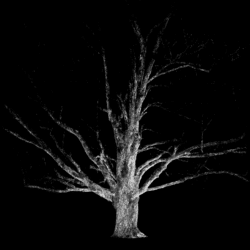Developments in this area since the last edition of The Philanthropist include such items as: the release of a revised form T3010, changes in sales tax exemption in Quebec, and the overturning on appeal of the decision in McBurney v. The Queen.
Prescribed Forms to be Filed by Registered Charities
Recently, Revenue Canada, Taxation has issued a revised form T3010
(Registered Charity Information Return and Public Information Return) which combines the two previous forms T3010 (Public Information Return) and T2052 (Information Return) that a registered charity was required to file. This form is now the only form that a registered charity that is also a corporation is required to file with Revenue Canada. The requirement for filing of a corporate income tax return was repealed, effective for 1983 and subsequent taxation years.
The revised form T3010 is four pages and asks for much of the same information that was required on the previous form T3010. The information required by the previous form T2052 and the corporate income tax return relating to disbursement quota are now contained in Schedules 1 to 4. The information contained on these four schedules will be seen only by Revenue Canada, Taxation and is not for public viewing. In addition to the form and the schedules, Revenue Canada, Taxation has released a publication entitled Guide to Charity Information Return which comments in some detail on the revised form and the four schedules.
The format of the revised form T3010 is similar to the individual income tax return that each Canadian taxpayer is required to file on an annual basis. As indicated, the information that is required, with some exceptions, is the same as that on the former form T3010 and accompanying Schedule A. Additional information is required on the charitable activities that a registered charity carries on both in Canada and abroad and, in the case of charitable activities carried on outside Canada, there is considerable space devoted to the method by which such activities are carried out, including the extent of the involvement by a registered charity in the direction, supervision and control over the funds used in a foreign activity. In addition, page 2 asks for information on volunteer work which, as the form indicates, is not mandatory, but which Revenue Canada, Taxation would appreciate as the information will be collected and used to produce statistical information which will be made available to the volunteer sector. In this connection, the form is asking for the approximate total number of hours contributed by volunteers in three activities-fund raising, charitable activitites, and related business.
Schedule 1 asks a series of questions concerning donation receipts and relationships. The latter will be used to determine the appropriate category of the registered charity. These questions were, for the most part, asked on the former form T2052 (Return of Information) which is now replaced by Schedule 1 (except in the case of Canadian amateur athletic associations). Schedule 2 provides a working paper by means of which a charitable organization can determine its disbursement quota for the year and Schedule 3 is a statement of approved “property accumulated” in respect of which permission from the Minister of National Revenue has been received.
Schedule 4 is only to be completed by a charitable foundation (either public or private). The first part of the schedule consists of three questions, the purpose of which is to determine whether there are reasons for revocation of the registration of a charity or whether a penalty tax should be imposed on those persons who benefited from self-dealing; the balance of the schedule is devoted to the calculation of the disbursement quota. In this connection, the reference to “value … at the beginning of the fiscal period” on which 4.5 per cent is calculated is noted as either “the fair market value on the first day of the fiscal period covered by this tax return”or as “prescribed by the regulations under the Income Tax Act” which have not yet been released. Our understanding is that when the regulations dealing with this matter are released, they will be applicable for taxation years commencing after 1983. Schedule 4 together with the commentary in the Guide to Charity Information Return is similar, if not identical, to the material released previously dealing with this particular subject.
The text of most of the definitions contained at the back of the Guide to Charity Information Return was released previously in the Information LetterCharitable Foundations by Revenue Canada, Taxation. However, the commentary has changed slightly and some new definitions have been added.
Earlier this year, form T2094 (Registered Charities: Application to Reduce Disbursement Quota) and form T2095 (Canadian Charities: Application for Designation) were issued by Revenue Canada. Form T2094 should be prepared and forwarded to the Charitable and Non-Profit Organizations Section, Registration Division, Revenue Canada, Taxation if the registered charity in question wishes to reduce its disbursement quota under subsection 149.1(5). The result of this alleviating provision is to allow a registered charity a mechanism whereby its “shortfall” in charitable expenditures (including gifts to qualified doners) is remedied by having the Minister ofNational Revenue reduce the disbursement quota. Such permission will be given only in unusual circumstances which are deemed to be beyond the control of the registered charity. The filing of such a form may be appropriate in the first year of the new rules,particularly in light of the uncertainty as to the precise details of the rules and the lateness of the enactment of the relevant legislation. Form T2095 must be filed when the registered charity, which has been designated as either a charitable organization, public foundation or a private foundation, wishes to change its designation.
Sales Tax Exemption The Quebec Budget Speech of April 23, 1985 broadened the exemptions respecting sales of goods intended to remedy a physical impairment and sales of orthopedic devices and prostheses. Since April 24, 1985, the exemptions respecting these goods have included sales of component parts or spare parts for these goods and materials used to repair or manufacture them.
Also, to simplify administration of the sales tax system, establishments such as local community service centres, nursing homes, hospitals and social service centres may, as of April 24, 1985, purchase such goods exempt from tax instead of applying for a refund after making the purchase, the present situation.
The Queen v. McBurney
The appeal in the McBurney case* has been heard by the Federal Court of Appeal and the Court has refused to find that payments made by Mr. McBurney to his children’s schools were gifts which entitled him to official income tax receipts.
In The Queen v. McBurney, 85 DTC 5433 (Federal Court of Appeal), the Crown appealed to the Federal Court from a judgment of the Trial Division which held that Mr. McBurney was entitled to deduct payments made by him in the years 1976 and 1977 to the Ottawa Christian School Association, The Community for Christian Learning Association of Ottawa, and The Immanuel Christian School Society of East Toronto, from his income on the basis that payments made by parents of children attending the schools were donations, not fees, since such payments were not strictly required. The Trial Court considered that parents of children attending the schools were requested, and expected, to make financial contributions but no child had ever been turned away because of parental financial hardship. It concluded there was no legal obligation to make the payments and the payments were therefore gifts which entitled Mr. McBurney to official income tax receipts.
The Court of Appeal found that the payments were not gifts. While Mr. McBurney may not have been under a legal obligation to contribute, the securing of the kind of education he desired for his children and the making of the payments went hand-in-hand. Both grew out of the same sense of personal obligation on his part as a Christian parent to ensure a Christian education forParents who hoped to be able to deduct tuition fees paid by them to private schools attended by their children will be disappointed by this decision. If private school tuition is to be financed out of before-tax dollars, a definite change in legislative policy and a specific provision appears to be required.
*For a previous discussion of this case see “Recent Tax Developments”, The Philanthropist, Vol. IV, No. 4, Fall 1984, p. 40. his children and, in return, to pay money to the operating organizations according to their expectations and his means.
Corrections
1. “Investment Strategy for Endowed Charitable Foundations”-Vol. V.
No. 1 In Table II, p.25, col.B the first line under b) should indicate the 80% figure for public foundations but (ii) 100% for private. c) would then read: 4.5% of value of investment assets at beginning of year (excluding assets in (ii) above). There is no averaging provision.
2. With regard to the recent adaptation ofDr. F.L.R. Jackman’s speech (Vol. V, No.2) (pp. 48-51) “Putting Your Case to the Family Foundation” the editorial staff wishes to clarify that the phrasing of the second last sentence (p. 51) had been modified and should have read, as in the original text:”Be as friendly and informative in your farewells as you are with your greetings.”
M.L. DICKSON
Member, The Ontario Bar
LAURENCE C. MURRAY
Thorne Riddell, Chartered Accountants


